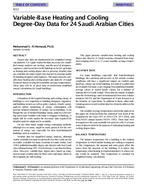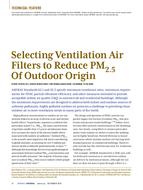Indoors, buildings should always be dry. When building interiors get damp and stay damp, problems often emerge for their occupants and for the building’s structure, material, and furnishings. Persistent indoor dampness has been associated with human health problems, increased risk to building’s structural fasteners and exterior enclosure, shortened useful life of furnishings, and reduced acceptability to occupants because of odors andstains. These and related problems can be costly and disruptive, as well as annoying to all concerned.
COMPLEX CAUSES
MOISTURE TOLERANCE AND LOADS
RISK FACTORS AND MITIGATION
HVAC Systems
Architectural Factors
Building Operational Decisions
Occupant Decisions
SOLUTIONS
Architecture and Design
HVAC Systems
HEALTH-RELEVANT INDOOR DAMPNESS
MEASURING BUILDING DAMPNESS
Water Activity
Moisture Content
No. of Pages: 15
Citation: 2019 ASHRAE Handbook — HVAC Applications
Product Details
- Published:
- 2019
- Number of Pages:
- 15
- Units of Measure:
- Dual
- File Size:
- 1 file , 12 MB
- Product Code(s):
- D-A642019IP


